Keeping the spirit of adventure alive forever: creating a new print magazine, film photography in 2025, and trading control for meaning
The Revelry Collection interview: 'If you can get enough subscribers, you can have a good business with this kind of magazine.'
In late 2024, I heard about a new adventure magazine focusing exclusively on film photography. Revelry Collection (on Substack:
) was its name, and it looked great! Intrigued, I dropped the founder Bentley Zylstra a line, and as we chatted I learned that not only was he building a new magazine from scratch, he was also in high school at the time of writing – and a passionate analogue photographer.Eager to support this new venture, I offered my help in the form of mentoring and advice. Bentley generously proposed to list me as an ambassador on the website, and in a series of chats over video call I tried to pass on some of my knowledge of the outdoor publishing industry. I also cast an eye over an early version of the magazine’s very first issue.
But I wanted to learn more – so we scheduled a video call for a proper interview. Our chat covered much ground, roaming far beyond film photography and publishing to the nature of adventure itself. When I talk to people like Bentley, at the forefront of the counterculture in the great outdoors, I feel hopeful for the future.
As I write this, Volume 001 is at the printing press in the UK. Use the code ALPENGLOW20 to get 20% off any order from https://revelrycollection.com/.
The Revelry Collection interview
This conversation was recorded in March 2025. If you would prefer to listen to it in full, the audio is embedded above. The transcript below has been edited for clarity.
Alex Roddie: Tell us about your background! I’m interested in how you got into photography and your route into the world of adventure.
Bentley Zylstra: I got into photography in 2021. My parents gave me a camera for Christmas, and we had a once-in-a-lifetime opportunity to go to Hawaii for a couple of months. And I just went crazy! I took probably 50,000 photos over two months, really learning what photography was, what ISO was, what aperture was. I took a bunch of workshops, just kind of fell in love with it.
Before Covid, I was very much not into the outdoors… I skied a couple of times a year, but I wasn’t into it. But then Covid happened, and we took a road trip around the American West for a month. Just seeing those towering mountains, going to Yellowstone… I live in Washington, where it feels very closed in with all the trees, so seeing that open land was pretty transformative.
I’ve honestly fallen in love with hiking and I beg all my friends to go with me up into the mountains – probably too much! So that’s how I got into adventure. My mum grew up in Alaska too, so that definitely helped because we would go to Alaska every summer and go fishing. That was always a part of my life.
You mentioned you’d been given a camera and took thousands of photos. I’m guessing that was a digital camera at first, so when did you first pick up a film camera and what does film mean to you now?
I picked up a film camera in 2023. I was feeling burnt out on digital photography; it was getting a little monotonous. You can figure out a formula to take good photos, and with digital I felt I had this formula down.
My mum actually had an old film camera that she hadn’t used for 15–20 years, so she let me use it. I shot my first roll of film, got the scans, and never went back.
I loved the way the photos looked, loved holding them in my hands and seeing the negatives… it was like your photos were brought to life in a different way. It just has that look to it that you honestly can’t replicate.
This leads me into my next question. Over the last few years, we’ve seen this massive resurgence in film photography, especially amongst younger people and in the adventure world. In my own submissions inboxes for two different magazines, I’ve seen an increase of people sending in film scans. What do you think is behind this shift? And where do you see it going in the next few years?
With the world becoming so digital, people are craving something, anything, that’s physical. Photographers are craving something, because you can shoot digitally, edit digitally, send the files off and it gets published digitally. I mean, it’s nice, but you’re never touching your photos. You can’t flip through a website. It’s just different.
I feel like people want that sense of tactile difference in their life. Honestly, I hope it grows because film prices would decrease!
Yeah, that would be nice!
I honestly don’t know. It could be a fad – maybe people get into it for a little while. I don’t know – I hope film stays around, because I love it! I have definitely seen a lot more photographers get into film photography, especially in that 20–35 age range.
I’m 38, so I’m at the older end of the age bracket. I think people older than me are like, ‘Oh, film is this old thing I used to shoot 20 years ago’ and aren’t interested in it. Whereas people my age and younger either remember it from when they were a kid, or they never used it and they’re getting into it. And I think that’s the exciting thing – the people who never used it back in the day, because it’s brand new for them.
Looking at pictures of my parents from their childhood, flipping through, it’s this different experience than swiping through photos on your phone. What are my kids going to look at?
I’m a big believer in the fact that film images, if they’re printed or you have the negatives, physically exist. I’ve got family photos from 100 years ago. No digital images from our era are going to survive 100 years.
Also, yes it’s great that we have 40,000 photos from childhood, but no one’s going to look through that! I mean, I don’t even look through my own photos. But I do think it’s cool to document. When I have kids, I’d love to document their childhood.
Moving on to the magazine itself, I’m really interested in the fact that you’ve chosen to launch an independent print magazine in 2025. Can you tell me a bit about why you chose to do this rather than simply launching another website, and are you making a statement about the value of print media or the downsides of online content, or maybe a bit of both?
As I started looking into it I realised that there is a resurgence of a new type of print media.
You can see it in coffee, you can see it in surfing, you can see it in travel, adventure… these very niche, dedicated cultures. You are seeing this resurgence of print, but in a different way. It’s not like the traditional Outside magazine or Condé Nast title. It’s really catering to the reader.
If you can get enough subscribers, you can have a good business with this kind of magazine.
Print has a different feel to it. You’re flipping through the photos, you can take it with you when you go hiking, there’s no notifications, you don’t need cell service. It’s just a different experience.
For photographers and filmmakers, I think they’re sick of online content. It’s posted to Instagram, put on this peer review. I mean, I’ve done it before too, but there’s something about holding your photo and seeing it. I remember seeing my photo in a sample of this magazine for the first time. It’s really hard to replicate.
Again, it physically exists… when you’ve got something published you can stick it on your shelf and it can stay there forever. You can have a portfolio on your website, but it’s not the same, is it?
And in 20 years we might not even have iPhones any more! Who knows, maybe there’s no internet, just this random AI bot you talk to… I don’t know! <laughs>
<also laughing> It sounds grim!
It sounds terrible! Or maybe it’s better, I don’t know!
<still laughing> OK, so tell me about the learning curve. What surprised you the most, any unexpected pitfalls, and was anything easier than expected?
Everything was harder than I thought! I vastly underestimated what it took to create a magazine. Everything from the business side of it to getting it printed to the design has been very difficult.
What surprised me most was trying to figure out what to say no to. At the beginning I was like, ‘Yes, I got a submission! This is great!’ But now I’m here, seven months later, and we’re already full for Volume 002 and almost full for Volume 003.
It’s really hard to figure out, OK, how do these stories interact together? Because I’d never really thought of that before. How do these stories form an overall story arc? How can you take the reader on a journey through these different places, make it exciting?
A lot of the process is not stuff that can be taught, it’s stuff you just have to learn by doing. If someone had told me that six months ago, I don’t think it would have helped, because you have to get your hands dirty and figure it out.
It’s a very good point about how you select a bunch of stories and how they interact together. As far as I know, there’s no manual for that. That’s the kind of thing you learn on the job. For example, if you’re doing a magazine about adventure and film photography, you can’t have eight stories about hiking and one story about something random. You’ve got to have a selection, haven’t you?
And also, because I’m based in the American West, a lot of my stories come from there – especially because there’s so many photographers here in Washington State. But I want to provide something for a wider breadth of people.
Revelry Collection isn’t just print, of course. There’s a beautiful website and Substack page and newsletter. How did you decide on this specific blend of online platforms to support the print magazine? And can you tell us about the online strategy you’ve arrived at?
Originally the magazine started as a newsletter. That was the first inkling of getting work out there, trying to build an audience and community. Originally it was just going to be an online magazine. We did do that for quite a while, and the newsletter was going to be the thing that let people know the new articles were out.
To be honest, people don’t like to click buttons! So I started to provide the content in the email, which was a really small decision, but it contributed to the growth of the newsletter. The newsletter is the thing bringing people into the community of the magazine, giving them a taste of it.
The hallmark of it is just doing one or two things really well. At the beginning I wanted to sell prints, do magazines, do a newsletter, create short films… you can’t stretch yourself too thin.
A great example is Mountain Gazette. They make a magazine; that’s all they do. They don’t make films, they don’t do online articles, they kind of do a newsletter, but they make the best magazine.
And out of interest, did you have any Meta platforms like Instagram, or did you make a conscious decision to steer clear of those?
We did start an Instagram a couple of weeks ago just for the launch of the magazine. We weighed the pros and cons, but we really wanted people to be able to share about the magazine, tag photos. And just growing the community overall. It’s a pretty hands-off Instagram account. We will schedule posts, send on a Sunday, and then repeat. It’s really a way for people to get into the magazine, get into the newsletter, just give quick updates.
Tell us what we can look forward to reading about in Volume 001.
So many stories! We have a foreword written by Alex Strohl, and also one of of his medium-format photos from Iceland. We have an interview with adventure photographer Taylor Burk – a conversation about going into the wild. Why do we do it, why do we photograph it? He talked a lot about speed of observation. Going into these places, but moving in a way that’s with the environment so you can actually experience it. I’m excited for you guys to read that one.
Loads of great stories. We’ve got hiking in Montana, travels in Italy, motorcycling in Scotland.
Do you have any plans about bringing in brand partners or advertising? Because I know Volume 001 is advertising-free. If so, what values do you think you’ll be looking for in the brands you choose to partner with? And what do you think Revelry Collection can offer in exchange?
Yes, we would love to bring in strategic partners that fit with the brand and will provide our readers with something valuable. I want to tell them about brands that are going to add to their life. I don’t want to be advertising rejuvenating face cream. I want to be advertising adventure coffee, or boots, or a cool boutique hotel, or things that make you say, ‘Wow, I want to go there!’
Our whole goal is to build a community of people who trust, because trust is a huge thing. So I think brands can piggyback off that trust. And the fact that we are being picky will show our readers that we’re choosing the best brands – we’ve tested them, we’ve seen them, you can be sure you’re getting a good product.
Moving towards slightly more abstract themes now, what are your views about how adventure can be a force for good in the world today?
It’s being somewhere you can have a second to slow down, hear your breath, hear the birds, not have constant notifications. For me a short walk, even if it’s by a road, is beneficial for me – I have a clearer mind, I can think better, and I will have a better day.
The world is a little predictable today. I feel like we’ve made everything too perfect. The outdoors can be the most peaceful place in the world, or it can be howling winds. Sometimes an experience is not good or bad – it’s just an experience, and you can take from it the parts that you want. We try to label things good or bad, but I think that’s unfair! The world is more complex than we make it out to be, and being outside teaches you that.
It’s easy to feel like we have control over everything in modern life, whereas you go on a backpacking trip somewhere in the wild and suddenly you don’t have as much control any more. And that is humbling.
For the past couple of hundred years we’ve been trying to tame the wild, control everything, so people are probably a little fed up with it. They want… I don’t even know if it’s excitement or thrill, but they want to bring that sense of adventure back into their life.
The way I’ve seen it put recently is that people are looking for a sense of meaning – that modern life robs people of meaning in exchange for control, and if we can find that meaning again then we’re good! <laughs> Maybe adventure can do that. Finally, if you could sum up Revelry Collection’s mission in one sentence, what would it be?
Our mission is to keep the spirit of adventure alive forever.
There you go – that’s brilliant! Well, that was really interesting. I love your insights into making a magazine, coming to film photography and everything else, so thank you so much.
I appreciate it! You had some great questions there.
Don’t forget, you can use the code ALPENGLOW20 to save 20% on any order at https://revelrycollection.com. Or why not subscribe and support the new magazine as it grows?
Follow on Substack here.
All images © 2025 Revelry Collection


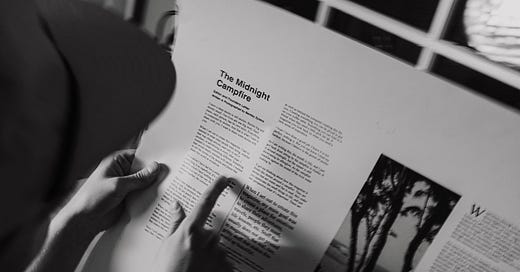




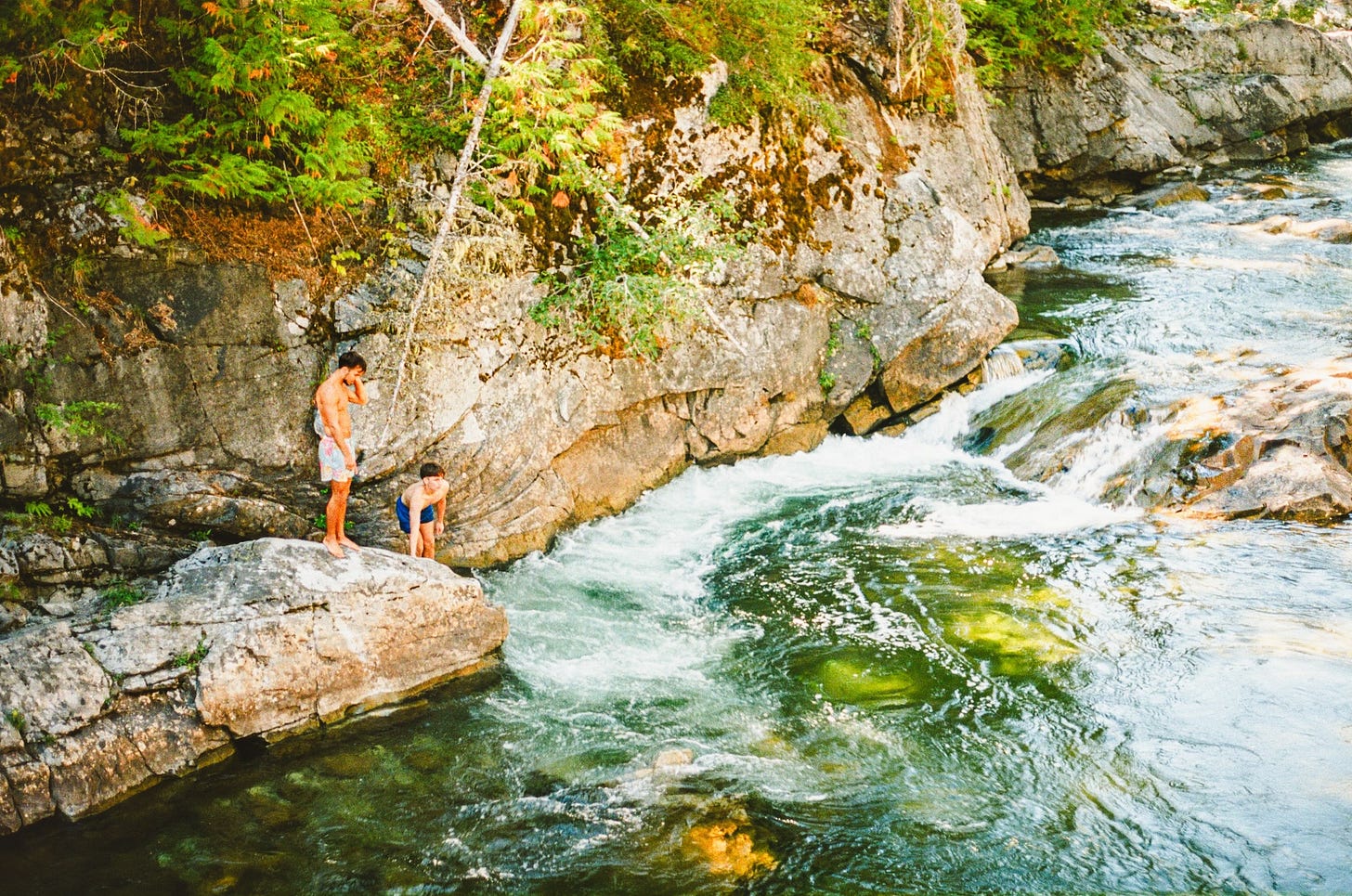
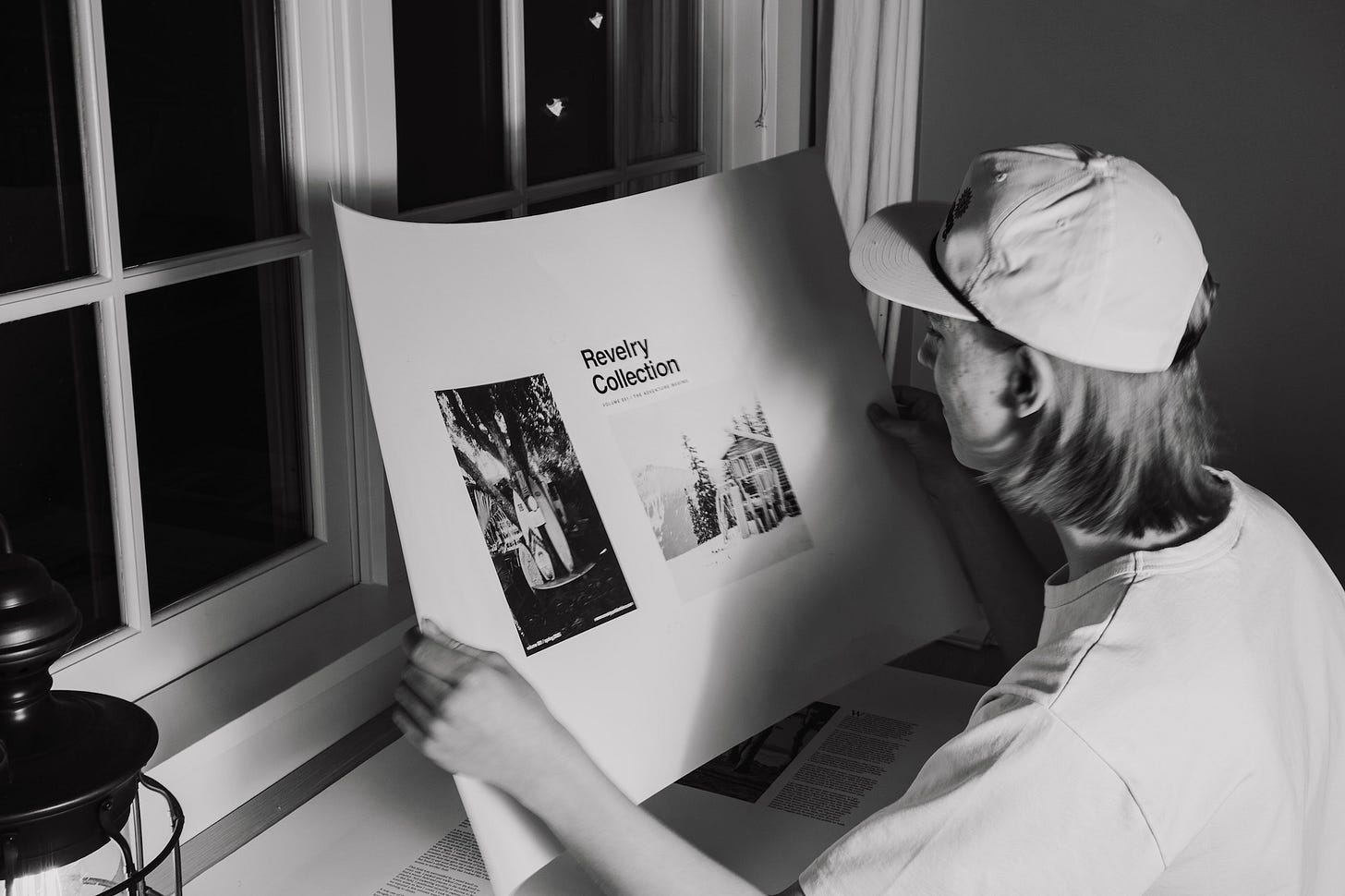
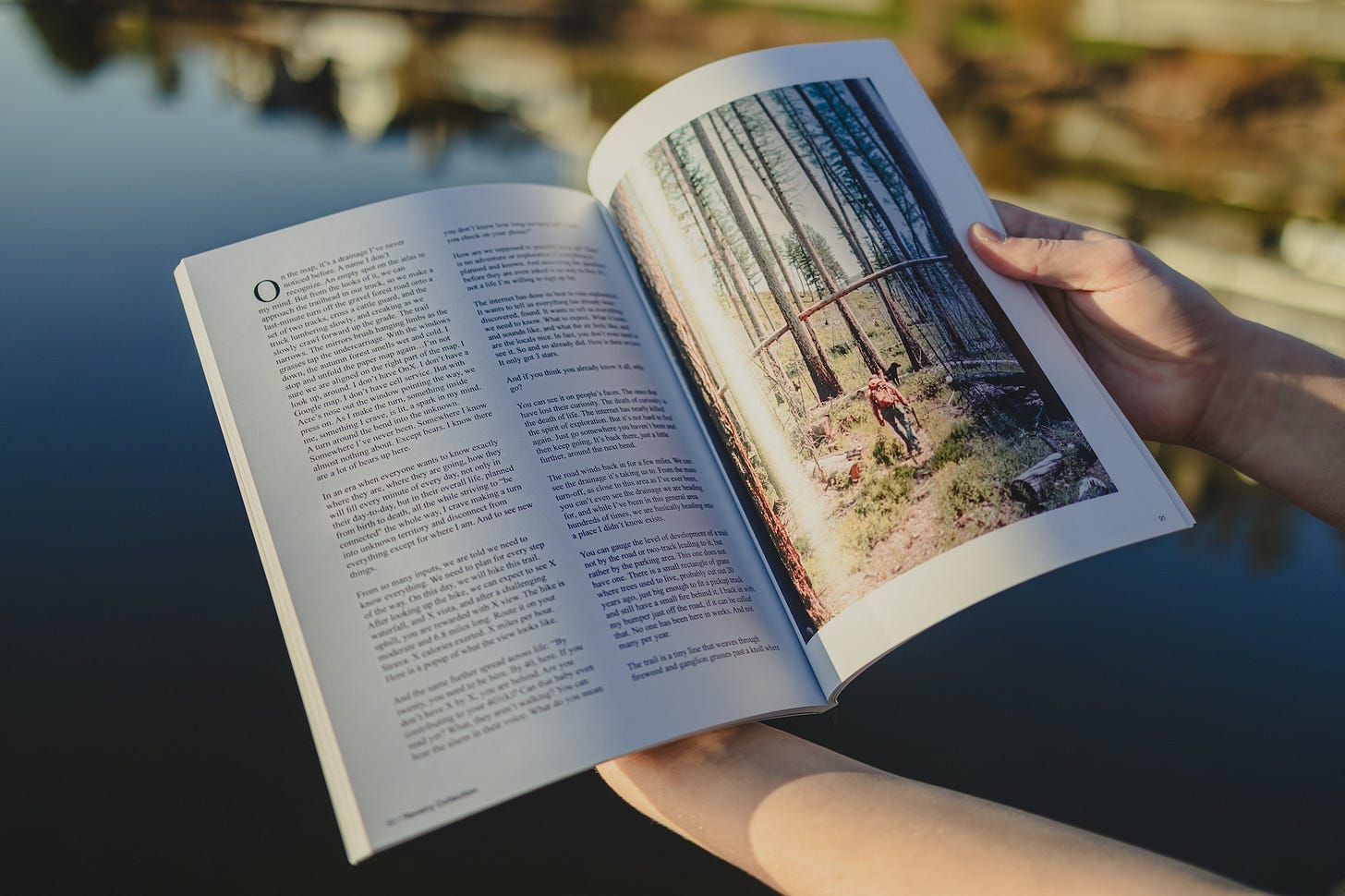
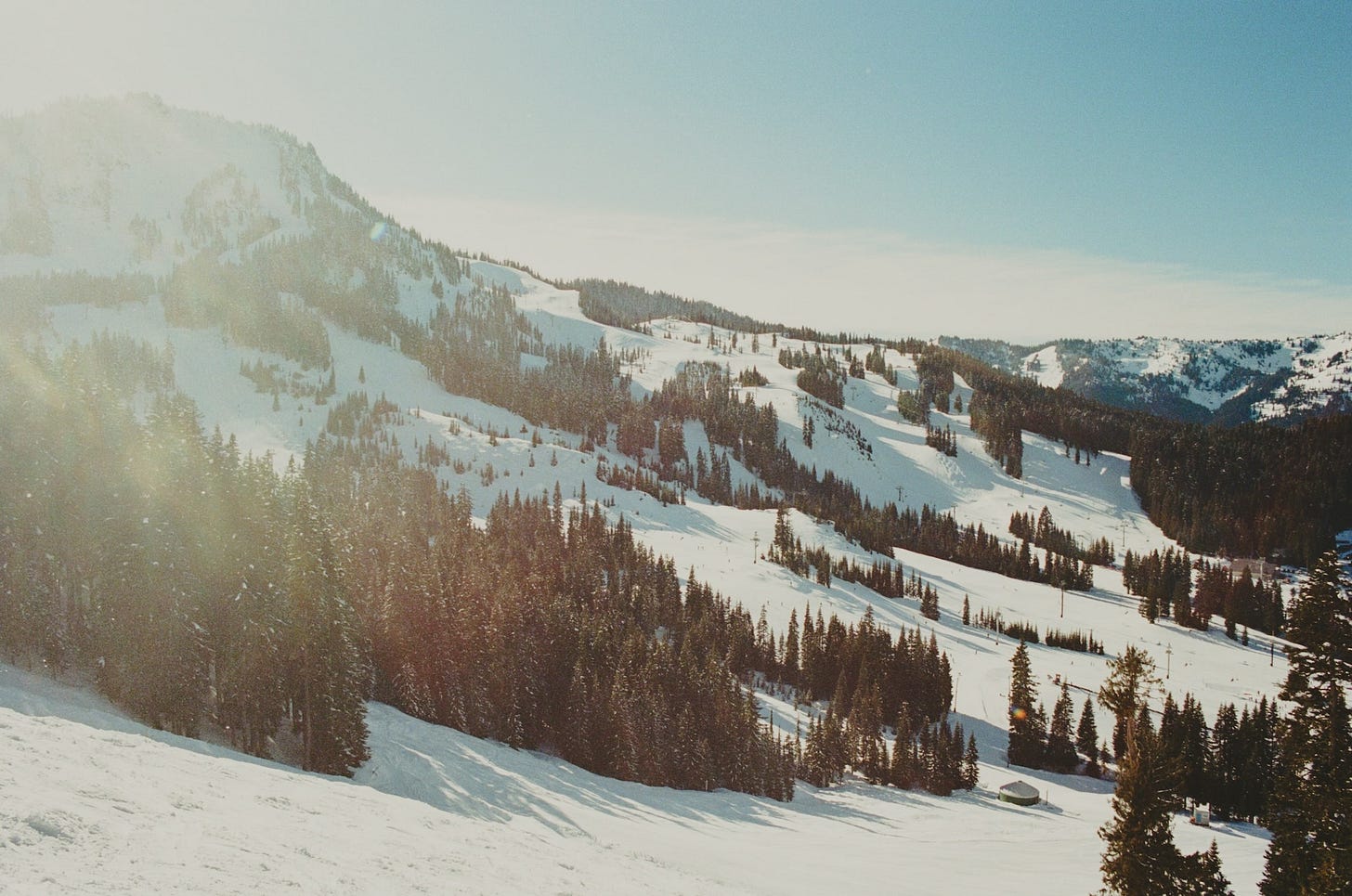

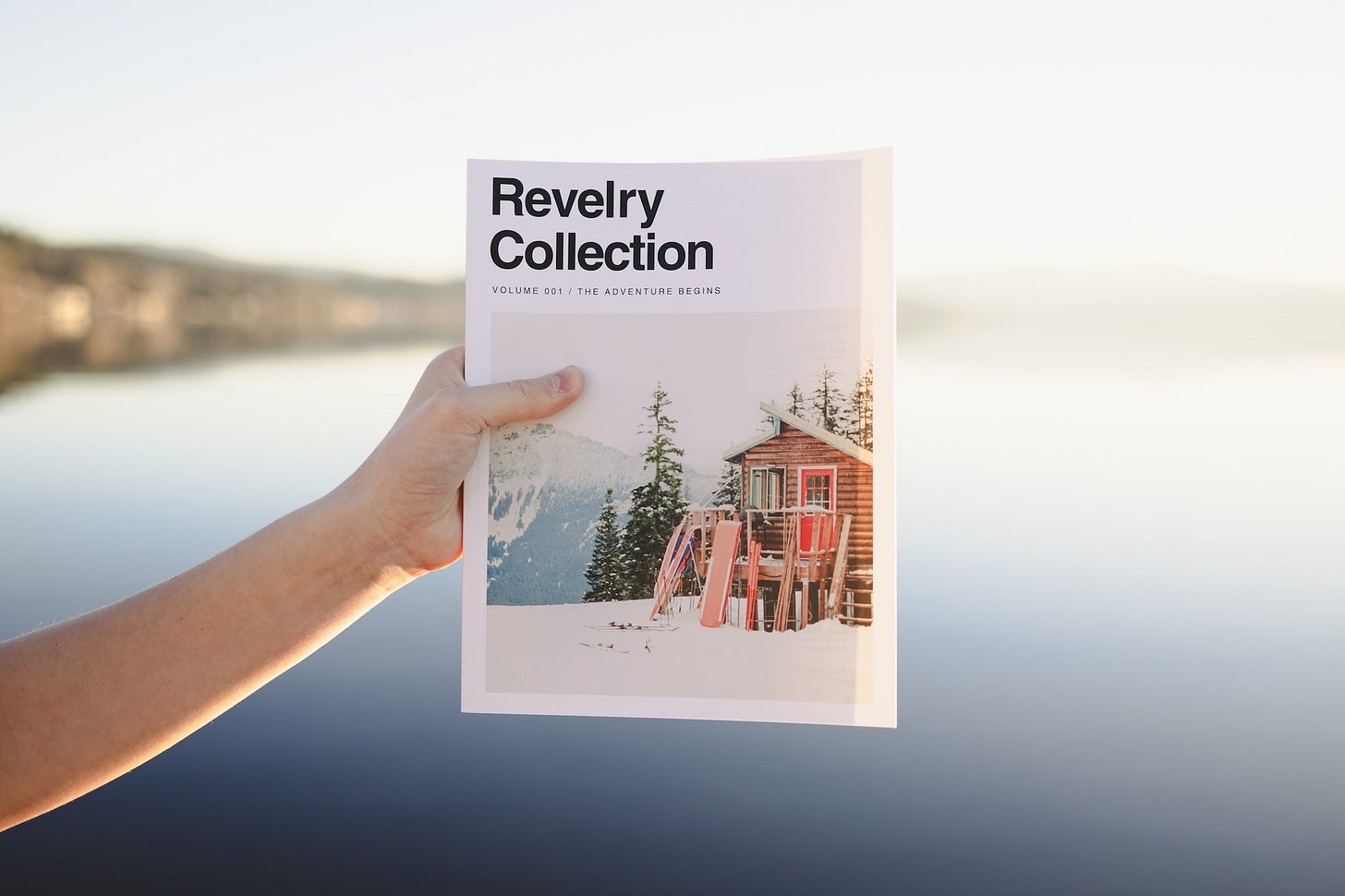
of course Alex is spot on! I will sign up now. All of what he says in this interview is 100% similar; the same thing that i have been saying for the past FIFTY YEARS! So at that time-- 1967 I founded THE FIRST American adventure travel company, with two other mountaineers, and named it MOUNTAIN TRAVEL. The company has grown and is still taking people outside.
I am old now, just turned 91, but ever so actively promoting the outdoors and now my new memoir; TRAIL BLAZING THE UNKNOWN by www.wanderlustconsulting.com just came out.
Congrats to you Alex yes I admire you and your posts.
Leo Le Bon
author
Over the moon to see people still care about print mags